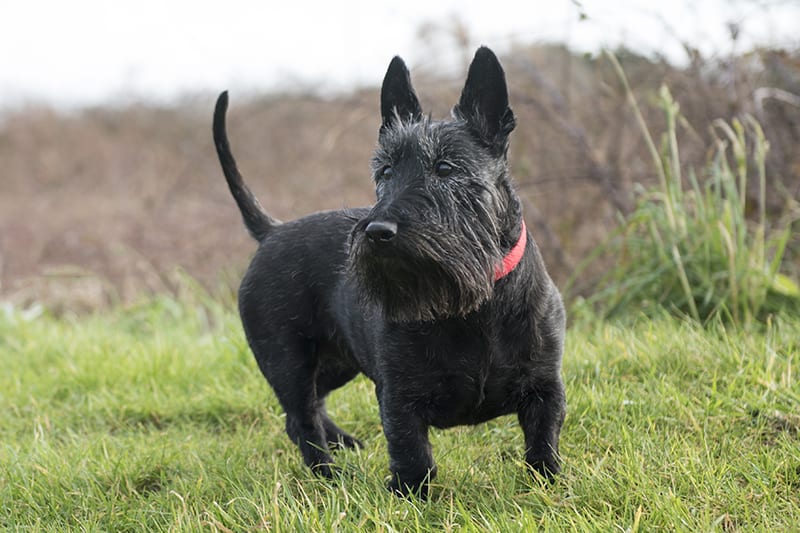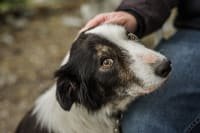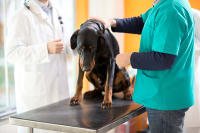Pet Care
Symptoms of Bladder Cancer in Dogs
Breeds of Dogs with Increased Rates of Bladder Cancer
Although it is possible for any breed to develop bladder cancer, a genetic predisposition is believed to exist since the disease is seen in Scottish Terriers far more than any other breed. Other dog breeds that appear to face a higher than average risk of developing bladder cancer include wire hair fox terriers, Shetland sheepdogs, beagles, and West Highland terriers. Middle-aged and older senior dogs of these breeds appear to be at the highest risk.
Causes of Bladder Cancer
The precise cause of bladder cancer in dogs has not yet been established, nonetheless, there appears to be a link between a genetic predisposition and chronic exposure to chemicals used in lawn care such as pesticides and herbicides.
Symptoms of Bladder Cancer in Dogs
In many dogs, symptoms of bladder cancer mimic those of other urinary tract conditions such as stones or infections. Needless to say, this can make the disease challenging to diagnose. If your dog has developed bladder cancer you may notice that they urinate small amounts frequently, have difficulty urinating or have accidents in the house.
Some other common signs of bladder cancer in dogs are discolored or bloody urine and persistent urinary tract infections that are resistant to treatment.
Lameness can also be experienced by dogs in later stages of the disease, due to the spread of the condition to other parts of the body such as the animal’s lungs or bones.
Contact your vet straight away if your pooch is displaying any of the symptoms listed above. While these are common symptoms of bladder cancer, they are also associated with a number of other serious conditions that require urgent diagnosis and treatment.
How Bladder Cancer is Diagnosed
Bladder cancer is often first suspected when the vet feels the presence of a tumor in the dog’s abdomen during a routine examination. Diagnostic tests that can be used to confirm whether the pet has bladder cancer include:
- Urinalysis to look for cancer cells in the pet’s urine
- Bloodwork to check for impaired kidney function
- Abdominal ultrasound
- CADET Braf testing
Prognosis Following Bladder Cancer Diagnosis
Sadly, the prognosis for dogs with bladder cancer isn’t good. For dogs not receiving bladder cancer treatment life-expectancy is about 4-6 months, whereas dogs receiving treatment live an average of about 6-12 months.
Available Treatments for Dogs with Bladder Cancer
The treatment for bladder cancer in dogs may include surgery, chemotherapy, radiation or a combination of these treatments.
Generally, a full surgical removal of the tumor is not possible because of its location, although in some cases it may be possible to remove a significant portion of the tumor in order to provide temporary relief of your pet’s symptoms. However, it’s important for pet parents to know that the tumor will regrow after a time.
CADET Braf Test for Determining Bladder Cancer Risk
The CADET Braf test helps vets to detect the presence of a specific gene mutation that is linked to bladder cancers in canines. This test can be helpful in detecting bladder cancer before signs of the disease become evident.
The CADET Braf test is also a useful tool for determining the extent of the disease, what the best form of treatment may be, and how a dog is responding to chemotherapy treatment.
Speak to your vet about the CADET Braf test if your dog is a breed with a higher than average risk of bladder cancer.
Note: The advice provided in this post is intended for informational purposes and does not constitute medical advice regarding pets. For an accurate diagnosis of your pet’s condition, please make an appointment with your vet.
If you think that your dog may have bladder cancer contact Animal Hospital of Clemmons right away to book an examination for your canine companion. Our vets have experience diagnosing and treating cancer in dogs and cats.
Looking for a vet in
Clemmons?
We’re always accepting new patients, so contact our veterinary hospital today to book your pet’s first appointment.
Related Articles View All
Puppy Teething Tips for Pet Parents
Our Clemmons vets understand how trying it can be when your puppy starts teething. Teething pain often leads puppies to chew on things they shouldn’t – including your best shoes and furniture. Here are a few tips to help you and your puppy deal with your puppy’s teething.
Dog Grooming 101 – Grooming Different Coat Types
Although all dogs require brushing, bathing and general grooming, some require more care than others. Today our Clemmons pet grooming team explains how to care for dog coats of different textures and lengths.
What To Do About Your Dog’s Stinky Breath
Do you avoid getting close to your pup because their stinky breath is unbearable? Bad breath is common in dogs — especially in senior dogs — and can be a sign of a serious health issue. Our Clemmons vets explain some causes of dog bad breath and how you can help to treat or even prevent it.
Why should I enrol my pet in a Wellness Plan?
If your veterinary clinic offers Pet Wellness Plans you may be curious as to how these plans work and whether they are worth signing up for. Today, our Clemmons vets share 4 benefits to consider when deciding whether a Pet Wellness Plan is right for you and your pet.
Dog Acupuncture & The Conditions It Can Treat
Our Clemmons vets know that if your pet is suffering from a health issue you will want to do all you can to help them feel better. Pet acupuncture can be a noninvasive way to help improve your pet’s rehabilitation. Here’s a bit about how acupuncture for dogs works and when it can be used.







